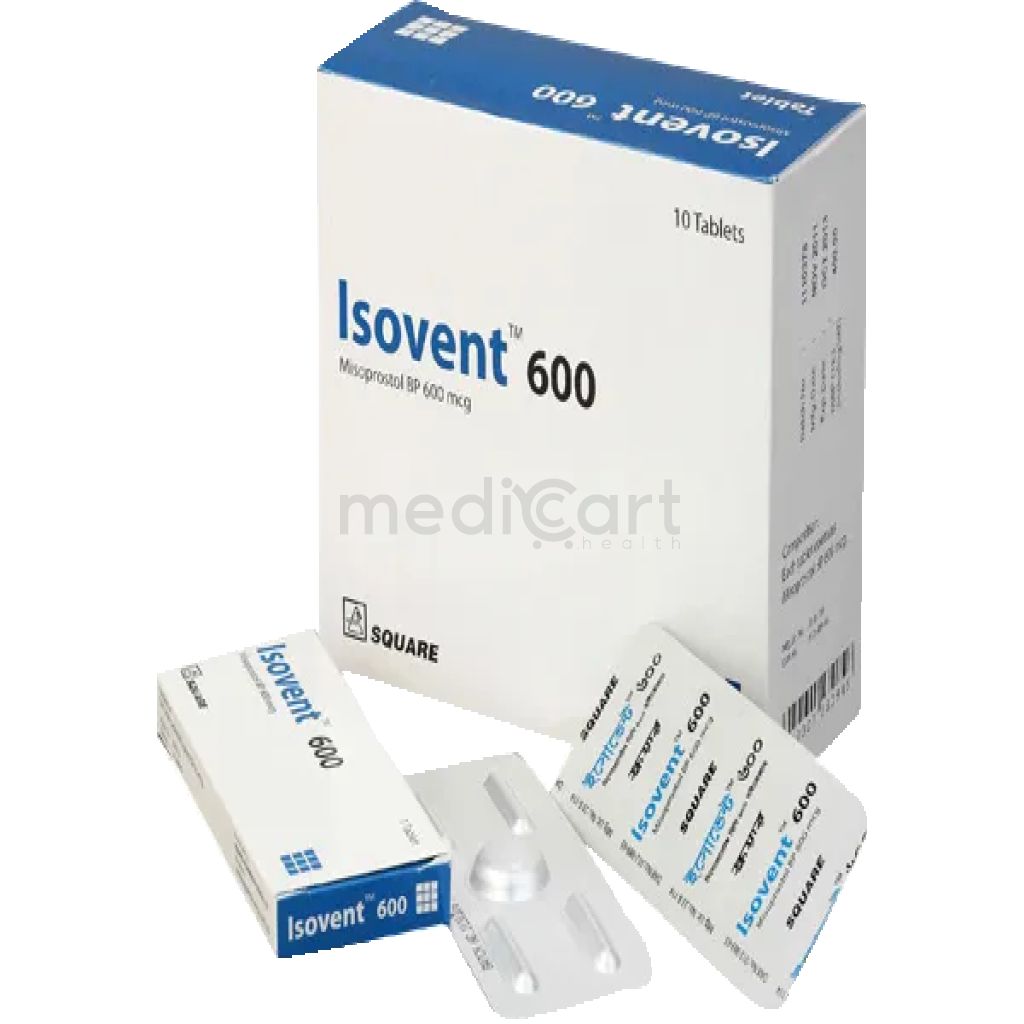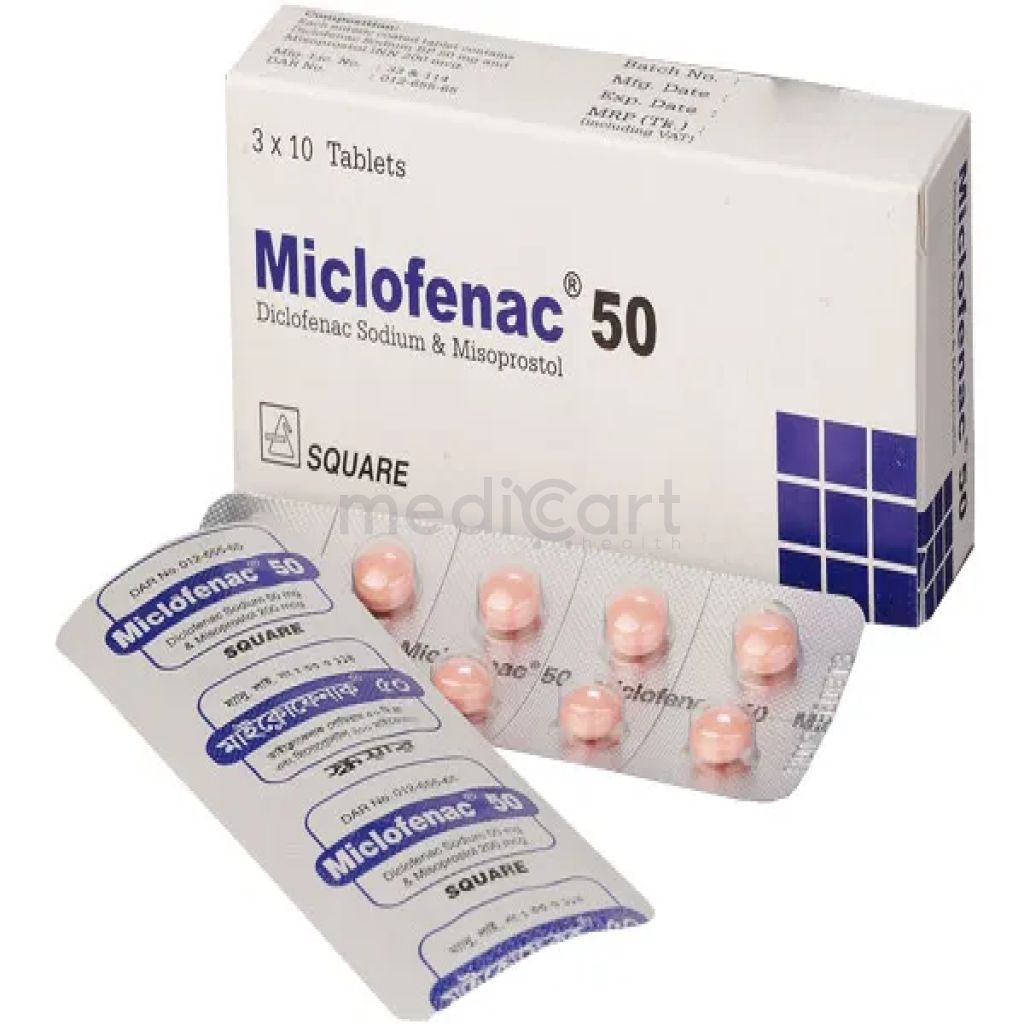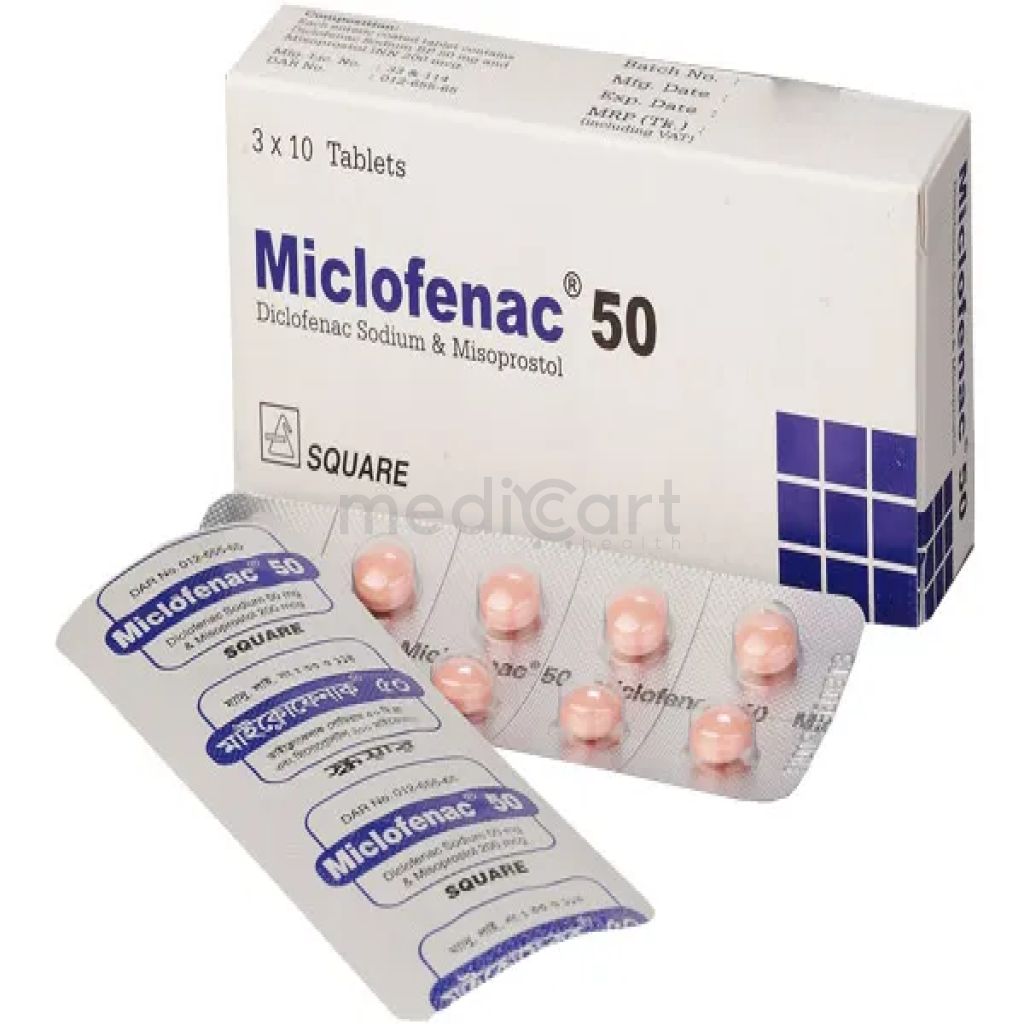

Isovent 200mcg
Tablet
Pack Size :
10 Tablet x 1 Strip
Generics :
Diclofenac Sodium + Misoprostol
Manufacturer :
Square Pharmaceuticals Ltd.
Best Price *
TK
151.00
* Delivery will be done in Dhaka city only.
Alternative Product
More Information About - Isovent 200mcg
Description
Generic Name
MisoprostolPrecaution
In case of prevention and treatment of NSAID induced gastric and duodenal ulcer: Misoprostol is contraindicated in women who are pregnant, and should not be used in women of child bearing potential unless the patient requires NSAID therapy. Women of child bearing potential should be told that they must not be pregnant when Misoprostol therapy is initiated and they must use an effective contraception method while taking misoprostol. Conditions where hypotension might precipitate severe complications e.g. cerebrovascular or CV disease. Inflammatory bowel disease. Patients prone to dehydration. Elderly. Renal impairment. Lactation: Drug is rapidly metabolized in mother to misoprostol acid, which is biologically active and is excreted in breast milk; although no published reports of adverse effects of misoprostol in breast-feeding infants exist, caution should be exercised when misoprostol is administered to breastfeeding womenIndication
NSAID-induced ulcers, Termination of pregnancy, Benign gastric and duodenal ulcersContra Indication
Misoprostol is contraindicated to anyone with a history of allergy to prostaglandins. Women of childbearing potential. Pregnancy and lactation.Dose
N/ASide Effect
>10% Diarrhea (14-40%),Abdominal pain (13-20%) 1-10% Headache (2%) Frequency Not Defined Anaphylaxis,Anemia,Cardiac dysrhythmia,Chest pain,Flatulence,Gastrointestinal hemorrhage,Hearing loss,Myocardial infarction,Nausea Rupture of uterus,Thromboembolic disorderPregnancy Category
Name : X
Description
Studies in animals or humans have demonstrated fetal abnormalities and/or there is positive evidence of human fetal risk based on adverse reaction data from investigational or marketing experience, and the risks involved in use of the drug in pregnant women clearly outweigh potential benefits.Mode of Action
Misoprostol, a synthetic prostaglandin E1 analogue, exerts its antisecretory activity by directly acting on specific prostaglandin receptors found on the surface of gastric parietal cells. It exerts its protective effects on the mucosa by replacing the prostaglandins consumed during prostaglandin-inhibiting therapies e.g. NSAIDs.Interaction
May increase effects of oxytocin. Increased risk of misoprostol-induced diarrhoea with magnesium-containing antacids.Pregnancy Category Note
Pregnancy category: X Lactation: Drug is rapidly metabolized in mother to misoprostol acid, which is biologically active and is excreted in breast milk; although no published reports of adverse effects of misoprostol in breast-feeding infants exist, caution should be exercised when misoprostol is administered to breastfeeding womenAdult Dose
NSAID-Induced Ulcer Adult: Benign gastric and duodenal ulceration and NSAID associated ulceration: 800 mcg daily (in 2-4 divided doses) with breakfast or main meals and at bedtime; treatment should be continued for at least 4 weeks and may be continued for up to 8 weeks if required. Prophylaxis of NSAID induced gastric and duodenal ulcer: 200 mcg 2-4 times daily taken with NSAID. If this dose cannot be tolerated, a dose of 100 mcg can be used. Misoprostol should be taken for the duration of NSAID therapy Induction of labor: 100 mcg taken orally. If cervical ripening or active labor does not occur, repeated dose of 100- 200 mcg of oral misoprostol is given every 4 hourly until labor is established (as evidenced by a Bishop score of 7 or more). Maximum number of dose is 6. Termination of pregnancy Day 1: 200 mg of mifepristone PO as a single dose under physician supervision Days 2-3: 800 mcg of misoprostol buccally once as a single dose; must be administered a minimum of 24-hr and a maximum of 48-hr following mifeprostone dose on day 1 Days 7-14 Must return for follow-up visit to confirm complete termination has occurred by medical history, clinical examination, hCG testing, or ultrasonographic scan If complete expulsion has not occurred, but the pregnancy is not ongoing, women may be treated with another dose of misoprostol 800 mcg buccally with follow-up in ~7 days Lack of bleeding following treatment usually indicates failure; however, prolonged or heavy bleeding is not proof of a complete abortion Surgical evacuation is recommended to manage ongoing pregnancies after medical abortion Prevention of postpartum haemorrhage: 600 mcg orally immediately following delivery.Child Dose
N/ARenal Dose
Renal impairment: Use with caution; peak plasma concentration, half-life, and bioavailability may be increased, but it is not clear whether these increases are of clinical relevanceAdministration
Should be taken with food.Disclaimer
The information provided herein are for informational purposes only and not intended to be a substitute for professional medical advice, diagnosis, or treatment. Please note that this information should not be treated as a replacement for physical medical consultation or advice. Great effort has been placed to provide accurate and comprehensive data. However, Medicart along with its authors and editors make no representations or warranties and specifically disclaim all liability for any medical information provided on the site. The absence of any information and/or warning to any drug shall not be considered and assumed as an implied assurance of the Company.








